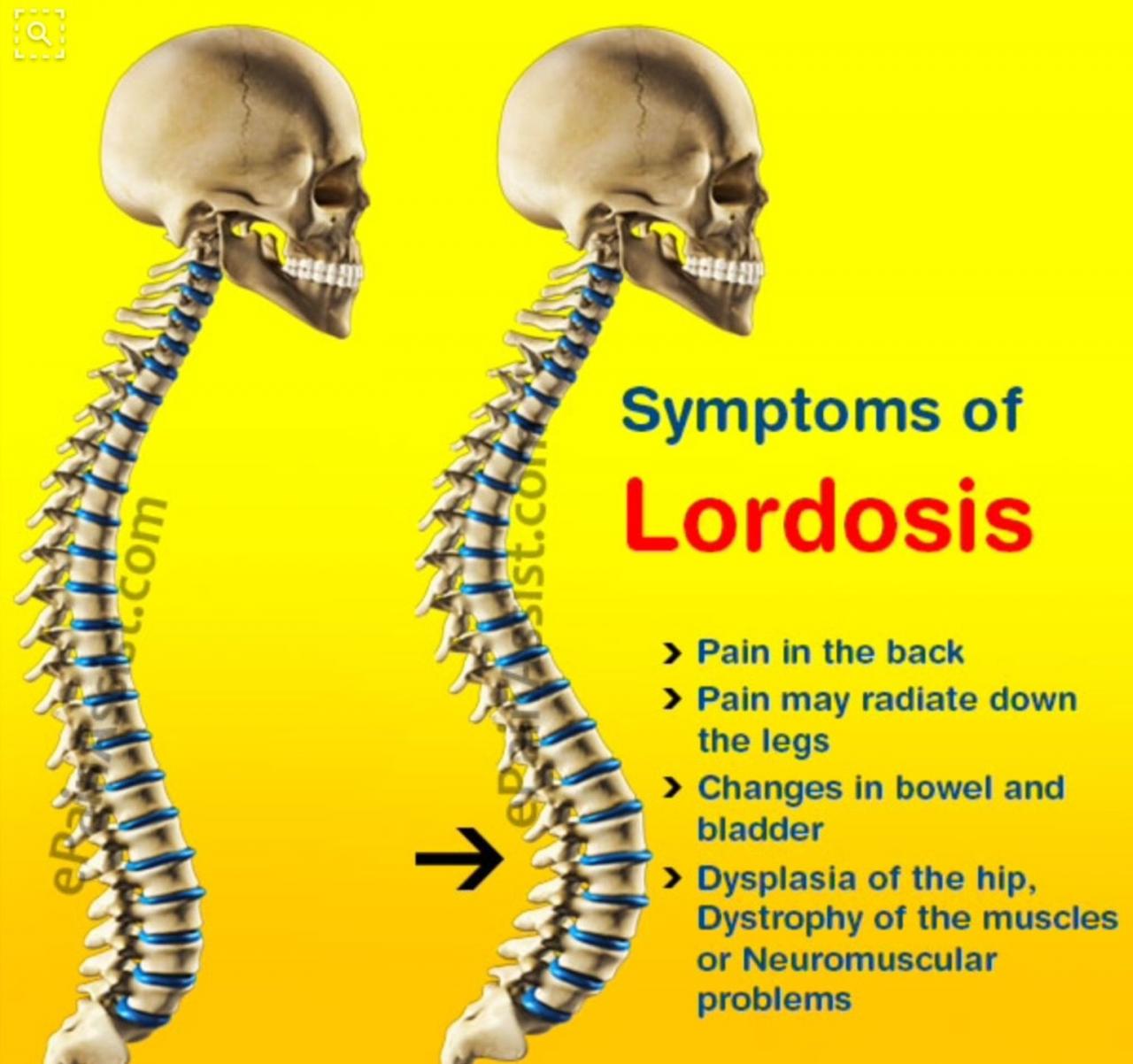Lordosis is characterized by an excessive curvature of the back, resulting in a “swayback” appearance, as depicted in the image  . This spinal deformity can be inherent from birth or developed due to various health problems, including muscular dystrophy, developmental dysplasia of the hip, or neuromuscular disorders.
. This spinal deformity can be inherent from birth or developed due to various health problems, including muscular dystrophy, developmental dysplasia of the hip, or neuromuscular disorders.
The major clinical manifestation of lordosis is the prominence of the buttocks. Symptoms can be diverse, particularly when lordosis coexists with other defects. It is essential to note that back pain, leg pain, and changes in bowel and bladder habits are not typically associated with lordosis.
Washington University Orthopedics highlights that some degree of lordosis is normal and does not necessitate treatment. However, it can become problematic when the curvature is excessive.
Lordosis can also be associated with achondroplasia, a rare genetic bone disorder formerly known as dwarfism. This condition results from the abnormal conversion of flexible cartilage into bone, leading to symptoms like short limbs and a large head. For more insights into this connection, the University of Rochester Medical Center offers comprehensive information.
Another associated condition is Flatback syndrome, where the lower spine loses some of its normal curvature, leading to a sagittal imbalance. This syndrome is well-documented by Columbia University Department of Neurosurgery.
Early-onset scoliosis, a form of thoracic insufficiency syndrome, can also be associated with lordosis, affecting rib and lung growth and development. Children’s Hospital of Philadelphia provides more details on this correlation.
Poor posture is another contributing factor to lordosis. The maintenance of good posture is crucial, especially in children, to prevent the development of this spinal deformity. For a more in-depth exploration of lordosis and its implications, visit UConn Health and Children’s Hospital of Philadelphia.
Understanding lordosis and its varied causes, symptoms, and associations with other disorders is vital for effective management and treatment. This knowledge enables early intervention and fosters better health outcomes for affected children.


